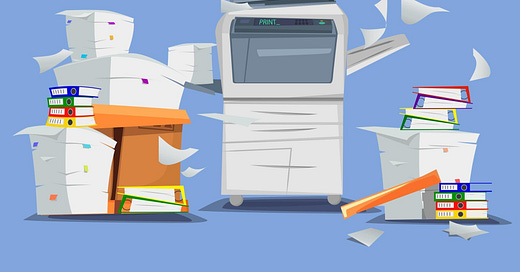Every teacher knows that copy machines are beasts: there is a complicated algorithm obtained by the number of items you need to copy multiplied by the number of students who will need copies and divided by the square root of how soon you need said copies. In short, if you need them for, say, your class that starts in 15 minutes, you are totally out of luck. But if these are items you won’t need until next September, the copy machine will purr like a kitten and spit your copies out lickety-split.
Copy machines are both friend and foe.
Take the problem of jammed paper. Modern machines will display a handy little video that shows you, step by step, how to remove the jam and fix the problem. 25 steps later, chances are good that the paper is still jammed and the copy machine will not work. This is where many less stalwart souls—not me—will just walk away. (NOTE: I suspect the teachers that walk away from the jam are the same ones who do not refill the coffee pot. But I digress.)
Other problems with the copy machine include NO MORE PAPER, and NO MORE INK, and mysterious blinking lights and codes you need a manual to read. But I’ve been dealing with copy machines and risographs and their ilk for thirty years now. When in doubt, turn it off and turn it back on again. 95% of the time you can force it to print what you need. Come September, the copy machine will be someone else’ nemesis.
Was there a machine at your place of employment that drove you nuts? What did you do about it?






Yes, the copy machine often had the attitude of a sleep deprived teenager who just ate six donut holes. You get the picture.